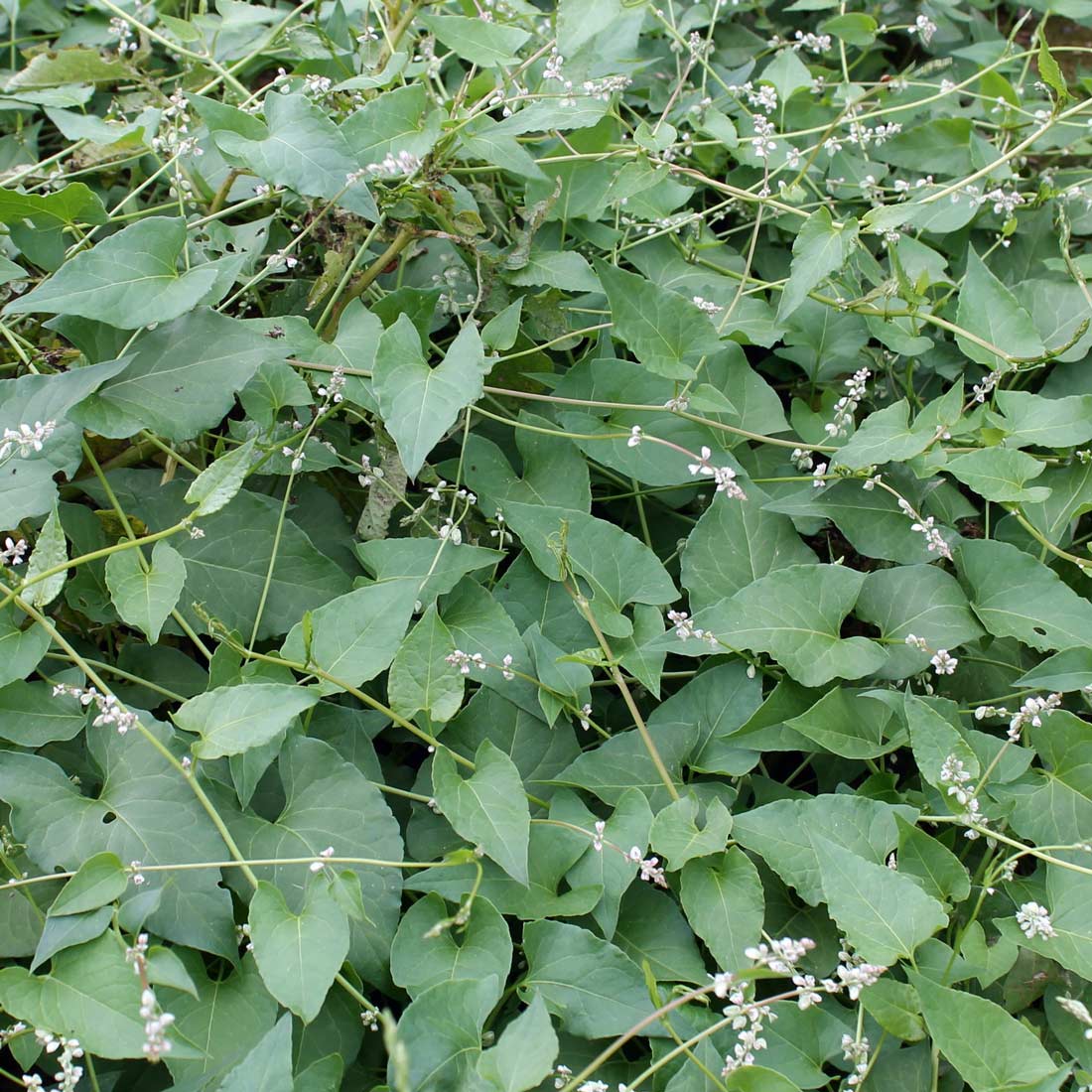Why You Should Never Let a Weed Go to Seed
Weeds in your garden are not only unsightly, they also are the source for more weeds to invade. Prevent new weeds from growing with Preen Weed Preventers.
Weeds that are fast-growing and hard to eradicate are bad enough, but ones that also spread in more than one fashion are the worst of all.
Such is the story with field bindweed, a common vining weed that spreads both by vigorous seeding and by spreading, rooting runners.
This long-entrenched, European and Asian native shows up throughout the U.S., where its trumpet-shaped flowers fake home gardeners into thinking it’s a wild version of morning glory. It’s sometimes even nicknamed “wild morning glory.”
But this summer bloomer is more bad guy than beauty as its long arms can quickly overtake a landscape bed or climb six feet or more up trees and shrubs. In both cases, that “overtopping” blocks sunlight that can stunt or even kill the desired plants underneath.
Try to dig field bindweed, and you’ll find roots that are not only deep and extensive, but if you leave behind even a small root piece, it’ll usually result in new shoots.
Field bindweed is particularly harmful in farm fields, where colonies of it can reduce crop yields by 50 percent.
All of those characteristics add up to a weed you really want to head off before it has a chance to get started. It’s widely regarded as one of America’s worst weeds.

When bindweed “arms” find an object, they’ll twine their way up, as this plant is doing on a blue spruce. Image courtesy George Weigel
Field bindweed (Convolvulus arvensis) is a spreading perennial with alternate, arrowhead-shaped green leaves and a climbing/vining habit. The telltale identifier comes from June through September when plants produce white to pale-pink trumpet-shaped flowers that are slightly less than an inch wide.
Plants quickly fan out across the ground to make a colony until arms find an object to twine around and pull themselves up. That’s when gardeners typically notice field bindweed – when plants are blooming and climbing up trees, shrubs, hedges, and fences.
Flowers left to mature produce capsules with seeds, which spread via water, wildlife, birds, and shoe soles. A single plant can produce 500 to 600 seeds per year, and those seeds can last as long as 40 to 50 years in the soil.
New plants also can pop up when buried root pieces hitch a ride in soil that’s moved from one site to another.

Field bindweed is most recognized by its trumpet-shaped white or pale-pink flowers that resemble morning glories. George Weigel
Once a field bindweed plant finds a new home, it builds an extensive network of roots and rhizomes. In a short time, even young colonies become difficult to eliminate by pulling or digging.
Field bindweed tends to favor rich soil and sunny locations, which is why it’s so often found in farm fields and home landscape beds.
Besides being confused with morning glories – an annual vining flower with heart-shaped leaves – field bindweed is closely related to hedge bindweed (Calystegia sepium). This perennial has the same vining habit, triangular leaves, and trumpet-shaped flowers as field bindweed, but its leaf tips are more pointed and its leaves and flowers are slightly larger.
Hedge bindweed is native to the eastern United States but also has spread throughout the U.S.

Field bindweed can quickly make a dense colony over the ground with its vining, spreading habit. Image courtesy George Weigel
You can start by trying to dig, hoe, and pull bindweed colonies. Just expect to see resprouting, and be prepared to keep at it for months, if not years.
The alternative that most weed experts advise is spraying outbreaks with either non-selective herbicides such as glyphosate or glufosinate or with broad-leaf herbicides such as triclopyr and combinations of 2,4-D, dicamba and MCPP. Always read product labels to make sure the weed you’re trying to control is listed.
The difficulty with spraying, though, is that it’s hard to apply a spray to bindweed leaves without also affecting plants the arms are wrapped around. Even painting on liquid products isn’t always fail-safe.
In stand-alone colonies, an option is smothering a bindweed patch with weed fabric, black plastic, or a thick layer of mulch for at least several months.
No matter which approach you use, you’ll probably need multiple efforts and re-treatments, plus vigilance to head off resprouting attempts.
Since bindweed is so hard to eradicate, the best strategy is to guard against it in the first place.
Step one is to remove or kill any existing bindweed plants before they’ve had a chance to flower and produce new seed. That at least limits future spread.
To address seed already in the ground, Preen Extended Control Weed Preventer is effective in stopping field bindweed seeds from germinating. Early spring is the best time of year to apply it.
In garden beds, a three-inch layer of mulch can help smother field bindweed seeds and prevent new plants from emerging.
And Preen Mulch with Extended Control Weed Preventer is a bagged mulch with a granular weed preventer for two-prong protection.